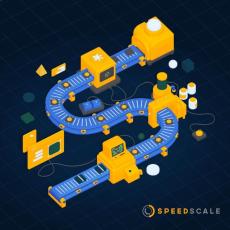- February 2025 (1)
- January 2025 (11)
- December 2024 (15)
- November 2024 (11)
- October 2024 (24)
- September 2024 (13)
- August 2024 (11)
- July 2024 (5)
- June 2024 (4)
- May 2024 (3)
- April 2024 (5)
- March 2024 (4)
- February 2024 (3)
- January 2024 (2)
- December 2023 (3)
- November 2023 (3)
- October 2023 (4)
- September 2023 (2)
- August 2023 (13)
- July 2023 (2)
- June 2023 (4)
- May 2023 (2)
- April 2023 (2)
- March 2023 (7)
- February 2023 (6)
- January 2023 (4)
- December 2022 (3)
- November 2022 (4)
- October 2022 (2)
- September 2022 (3)
- August 2022 (5)
- July 2022 (5)
- June 2022 (2)
- May 2022 (4)
- April 2022 (4)
- March 2022 (4)
- February 2022 (14)
- January 2022 (6)
- December 2021 (3)
- November 2021 (4)
- October 2021 (5)
- September 2021 (5)
- August 2021 (6)
- July 2021 (5)
- June 2021 (6)
- May 2021 (6)
- April 2021 (2)
- March 2021 (5)
- February 2021 (2)
- January 2021 (2)
- November 2020 (1)
Continuous Resiliency from Speedscale gives you the power of a virtual SRE-bot working inside your automated software release pipeline. Forecast the real-world conditions of every build, and know you’ll hit your SLO’s before you go to production.
Feed Speedscale traffic (or let us listen) and we’ll turn it into traffic snapshots and corresponding mock containers. Insert your own service container in between for a robust sanity check every time you commit. Understand latency, throughput, headroom, and errors -- before you release! The best part? You didn’t have to write any scripts or talk to anyone!
Automated Traffic Replay for Every Stakeholder:
- DevOps / SRE Pros: Understand if your app will break or burn up your error budget before you release.
- Engineering Leads: Let Speedscale use traffic to autogenerate tests and mocks. Introduce Chaos testing and fuzzing.
- Application Executives: Understand regression/performance, increase uptime and velocity with automation.
Before you go to production, run the projection.

















